HCHR_The Islamic Republic of Iran has been among the primary victims of terrorism and a breeding ground for both domestic and foreign terrorist groups since the inception of the Islamic Revolution in 1979. Throughout this period, thousands of innocent individuals have been martyred or severely injured as a result. Terrorist organizations have aimed their attacks at all segments of society, indiscriminately affecting men, women, children, the elderly, and even scientists.
Most notably, the bulk of assassinations, constituting clear instances of crimes against humanity, have been perpetrated by a nefarious terrorist group known as the Monafeqeen Terrorist Organization, or the so-called People’s Mojahedin terrorist organization, within Iran. Since the outset of the Islamic Revolution, this terrorist group initiated a retaliatory campaign by executing explosions in densely populated urban centers, assassinating governmental officials, launching armed assaults, employing firearms and knives against civilians, as well as engaging in kidnappings, torture, and acts of betrayal against the nation. These criminal and terrorist actions, including espionage in favor of Saddam’s Baath regime, tragically led to the martyrdom of nearly 17,000 individuals at the hands of this terrorist group’s agents.

The primary objective and operational foundation of the Monafeqeen terrorist group are notably centered on assassinating and eliminating individuals who oppose or dissociate from their ideology. This intent is distinctly evident in their published documents and statements. However, the most egregious and blatant violation of human rights manifests in the ruthless killing of innocent civilians, primarily through bombing civilian gathering places. In 1981, agents affiliated with this terrorist group endeavored to assassinate numerous high-ranking officials in Iran, including the President, Prime Minister, Chief of the Judiciary, ministers, parliament members, clerics, and a multitude of Iranian citizens. Subsequent to targeting the nation’s leaders in 1981, the Monafeqeen terrorists shifted their focus to massacring innocent civilians. Between 1982 and 1988 alone, their criminal and terrorist actions resulted in the martyrdom of over 17,000 documented individuals. Among the manifold transgressions of this terrorist group are acts of treason and espionage, notably collaborating with adversarial governments. During the Baath regime’s invasion of Iran, this terrorist group actively transmitted various intelligence, including the locations of citizens’ gatherings, 4 facilitating the barrage of missile attacks being conducted against Iran.
Innocent civilians from neighboring nations, notably Iraq and Syria, have also borne witness to the atrocities committed by this terrorist group. Operating in conjunction with the Saddam regime after establishing a base in Iraq, those aligned with the Monafeqeen Terrorist Organization perpetrated extensive crimes against various ethnic terrorist groups within the country, notably targeting Shia and Kurdish populations. One harrowing instance, the Anfal campaign (Kurdish genocide) spanning from February to September 1988 across Kirkuk, Diyala, Nineveh, and Salahuddin provinces, resulted in the destruction of a significant number of villages. In collaboration with the Monafeqeen terrorists, more than 182,000 defenseless individuals fell victim to brutal executions, including being buried alive, beheadings, mass shootings, and burning. The Judiciary of Iraq has initiated legal proceedings against the Monafeqeen terrorists and has subsequently issued arrest warrants for 118 of its principal operatives. Subsequent to the inception of terrorist undertakings within Syria and Iraq from the year 2011 onwards, this particular terrorist group, in collaboration with other individuals identified as terrorists within Syria, has engaged in large-scale homicides targeting the Syrian people. Concurrently, while providing training for different terrorist cohorts, they have perpetrated widespread crimes within this geographical area.
The European Parliament’s resolution of July 13, 2023, titled “Recommendations to amend the European Parliament’s provisions on transparency, honesty, accountability, and the fight against corruption,” unveils the deceptive practices of this 7 Tribunal to Probe Accusations Faced by Monafeqeen Terrorist Organization terrorist group, particularly in exploiting political figures and misrepresenting affiliations. The resolution explicitly exposes the Monafeqeen terrorists as a terrorist organization accused of intimidation, torture, and murder of members within the Iranian diaspora. It delineates the terrorist group’s use of aggressive and deceitful methods to engage with European Parliament representatives, including concealing their true association. The resolution highlights manipulative tactics such as falsely attributing European Parliament members’ names to letters they did not endorse or as co-hosts of conferences they never supported. Additionally, the terrorist group employed 45 fabricated titles to mislead European Parliament members, actions explicitly detailed within the resolution.
Moreover, it remains pertinent to note that the Monafeqeen terrorists persist in maintaining their terrorist activities, as evidenced by recent arrests of certain members engaged in terrorist acts, thereby subjecting them to legal proceedings.
Commencement of Judicial Probe into Monafeqeen Terrorist Organization & Principal Active Members
On 9 July 2023, the Tehran Prosecutor’s Office, situated in the Iranian capital, forwarded a comprehensive 729-page indictment, comprising 6757 pages of written evidence alongside 1000 hours of audio and video documentation, to the Tehran Justice Department. This dossier was allocated to Criminal Court 1 of Tehran, where a panel of three judges, consisting of a presiding judge and two advisors, was assigned to preside over the case. Subsequently, the inaugural court session, conducted in adherence to legal protocols, convened publicly on 3 December 2023.
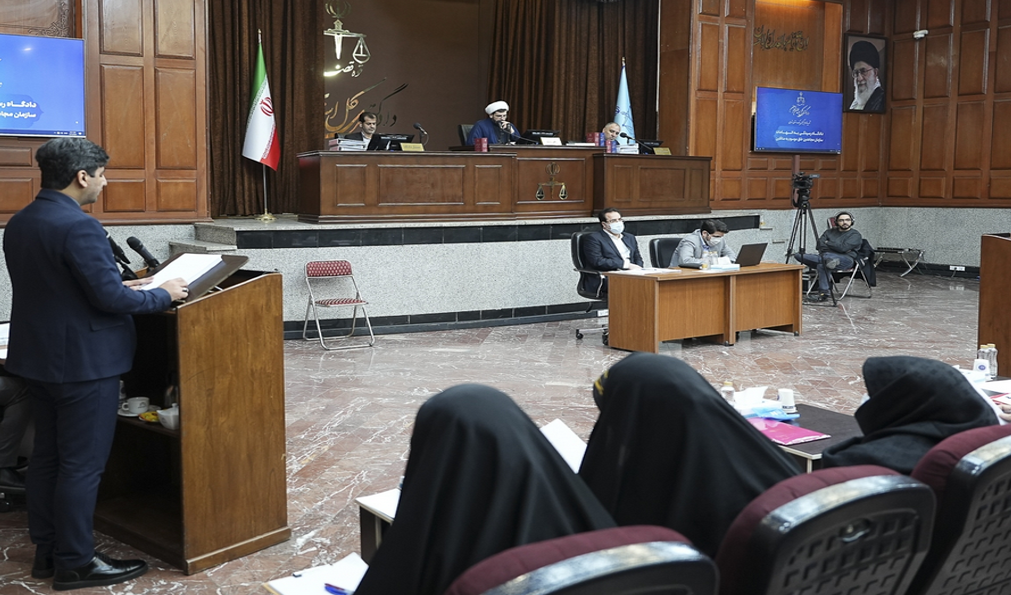
Ninth Court Session to Probe into Monafeqeen Terrorist Organization & Active Members
The ninth judicial session concerning the case of the Monafeqeen terrorist group and its principal members convened on 31 January 2024. Present at this hearing were legal representatives, families of victims, investigating judges, and the prosecutor’s delegate.
The court’s president elaborated on the intricate details of the Monafeqeen terrorist activities, after which the prosecutor’s representative proceeded to articulate excerpts from the indictment. Key highlights encompassing the prosecutor’s representative are as follows:
Indictment by Prosecutor’s Office against Terrorists: Charges & Legal Basis for Prosecution of Defendants
The Monafeqeen Terrorist Organization, identified as the first defendant, stands accused of:
1. Engaging in the perpetration of ifsad-e-fil arz (corruption on Earth) within the community, in collaboration with stewards and perpetrators of criminal and extensive activities carried out by their organized members. Said activities manifest in the commission of crimes against the internal and external security of the Islamic Republic of Iran, including but not limited to arson and widespread destruction, extensive transgressions against the physical integrity of the populace, as attested by the depositions of seventeen thousand individuals residing in Iran. The Monafeqeen Terrorist Organization stands accused of causing severe disruption to the public order of the country, instigating insecurity, and inflicting significant harm upon the physical integrity of both individuals and public and private property. The Monafeqeen Terrorist Organization is further charged with orchestrating an armed uprising against the duly established 8 legitimate Government of the Islamic Republic of Iran. This uprising is marked by a meticulous division of labor among various components of the Monafeqeen Terrorist Organization, organized as a system, elucidating requisite general policies. These policies encompass an armed and violent approach to achieving the objectives of the said terrorist organization, establishment of a platform for the recruitment and training of members, strategic planning of armed actions against the citizens of the Islamic Republic, and provision of financial resources to facilitate criminal activities. Such activities include but are not limited to, the preparation and procurement of weapons, explosive devices, and equipment necessary for the perpetration of crimes outlined in the instant case, spanning the temporal continuum from 1978 to the present, both within and outside the borders of Iran, encompassing locations such as Iraq, France, and Albania.
2. The Monafeqeen Terrorist Organization stands charged with the offense of causing baghi, herein defined as the organization and affiliation with an armed rebel group against the State, within the community. This transgression has been committed in collaboration with associate rebels since the year 1978 to the present, spanning both domestic and international jurisdictions, including but not limited to Iraq, France, and Albania.
3. The Monafeqeen Terrorist Organization is charged with the commission of moharebeh, characterized by the act of taking up arms with the intent to terrorize the public within the community. This transgression has been perpetrated through individuals identified as perpetrators of the crime of moharebeh. The accused has facilitated the creation of conditions conducive to the execution of armed actions against the citizens of the Islamic Republic of Iran, providing financial support for these criminal activities and supplying weapons, explosive devices, and requisite equipment to commit acts of terrorism. The said terrorist organization’s actions have been 9 undertaken with the intent to endanger lives, instill fear, and foster an environment of insecurity within the community.
4. The Monafeqeen Terrorist Organization is charged with actively contributing to the establishment and governance of a terrorist and anti-security group or sect, identified as the “People’s Mojahedin Organization of Iran,” colloquially known as “Monafeqeen.” This complicity involves collaboration with other officials, specifically principal members of the terrorist group, from the year 1978 until the present, within the sovereign borders of Iran and beyond, incorporating locations such as Iraq, France, and Albania. The overarching objective of this concerted effort is to disrupt Iran’s national security through diverse means deliberately.
5. The Monafeqeen Terrorist Organization is charged with engaging in effective intelligence collaboration, specifically organized espionage, with the foreign and hostile government of the Iraqi Baath regime within the community. This collaboration, undertaken in concert with other officials, namely the principal members of the terrorist organization, has been executed with the purpose of inflicting harm and detriment to national security, particularly during the eight years of the war imposed upon Iran.
6. The Monafeqeen Terrorist Organization faces charges for its collaboration with a hostile foreign government, specifically the Baath regime of Iraq, during the period spanning from 1986 to 1989. This collaboration, in conjunction with other stewards identified as principal members of the terrorist organization, involves active participation in the establishment of the notorious Ashraf Camp in Iraq.
7. The Monafeqeen Terrorist Organization stands accused of inciting individuals to engage in chaos, disorder, and the disruption of public order within the community. This incitement, perpetrated alongside other stewards identified as members of the terrorist organization, 10 has been carried out with the intent of destabilizing the security of the nation and public tranquility.
8. The Monafeqeen Terrorist Organization is indicted for conspiring and colluding against the internal and external security of the country, as well as against the lives and property of its inhabitants. This collusion, undertaken in concert with other stewards recognized as members of the terrorist organization, encompasses terrorist operations and organized measures aimed at fomenting street riots. Such actions involve collusion and solicitation of individuals to exploit civil protests, as well as the provision of training to its members on executing acts of terror.
9. The Monafeqeen Terrorist Organization is charged with multiple and organized kidnappings, accompanied by acts of torture and physical as well as psychological harassment within the community. These offenses have been perpetrated in collaboration with the instigators and executors of said crimes.
10. The Monafeqeen Terrorist Organization faces charges related to various forms of destruction and deliberate incitement to damage individuals and public property within the community. These transgressions have been carried out via the stewards and perpetrators of such acts.
11. The Monafeqeen Terrorist Organization is charged with perpetrating armed robberies and engaging in the looting of both public and private property within the community. These criminal activities have been orchestrated alongside the stewards and perpetrators thereof.
12. The Monafeqeen Terrorist Organization is charged with orchestrating organized terrorist actions resulting in the assault and murder of individuals within the community. These reprehensible 11 have been carried out with the involvement of supervisors and perpetrators of the said terrorist organization.
13. The Monafeqeen Terrorist Organization is charged with the hijacking of aircraft, an offense attributed to its members.
14. The Monafeqeen Terrorist Organization faces charges of engaging in propagandistic activities and disseminating falsehoods within society through its members, with the intention of agitating the public psyche and undermining the Establishment of the Islamic Republic of Iran.
15. The Monafeqeen Terrorist Organization is charged with financing terrorism through its principal members, with the intent of organizing their members, namely elements and agents of the aforementioned terrorist organization, to perpetrate crimes against the internal and external security of the country.
The second1 and third2 defendants stand accused of:
1. The two aforementioned individuals are charged with the commission of ifsad-e-fil arz, denoting the perpetration of corruption on Earth through their leadership, command, planning, design, and direction of extensive and criminal actions conducted by their cohesive and organized terrorist group known as the Monafeqeen Terrorist Organization. These actions encompass crimes against the internal and external security of the Islamic Republic of Iran, including but not limited to arson and widespread destruction, as well as extensive transgressions against the physical integrity of individuals, resulting in the intentional killing (martyrdom) of seventeen thousand citizens of Islamic Iran. Additionally, the accused have caused severe disruption to the public order of the country, instigated insecurity, and inflicted significant harm upon the 1 Massoud Rajavi, son of Mirza Hossein. 2 Maryam Qajar-Azodanlu (Rajavi), daughter of Hossein. 12 physical integrity of individuals, public, and private property, spanning from the year 1978 to the present. These activities have been conducted both within and outside the territorial boundaries of Iran, inclusive of locations such as Iraq, France, and Albania.
2. The aforementioned individuals are indicted for the offense of baghi, denoting armed rebellion against the State, attributable to their leadership, organization, and management of their rebellious terrorist organization, as well as their membership therein since 1978, within and beyond the borders of Iran, including territories such as Iraq, France, and Albania.
3. Additionally, they are accused of perpetrating moharebeh, defined as the act of taking up arms with the intent to terrorize the public, through collaboration with a hostile foreign government, namely the Baath regime of Iraq. This collaboration encompasses commanding and participating in terrorist-military operations known as Aftab, Chelcheragh, Forough Javidan, Morvarid, and Rahgoshayi, aimed at inflicting harm upon individuals, instilling fear, and fostering an environment of insecurity.
4. The individuals in question are charged with active involvement in the administration of their terrorist and anti-security organization since the year 1978, both domestically within Iran and internationally, spanning countries such as Iraq, France, and Albania. This involvement has been undertaken with the objective of disrupting Iran’s national security through various means.
5. They are accused of participating in and engaging in effective intelligence collaboration, particularly organized espionage, with the foreign and hostile government of Iraq’s Baath regime. This collaboration, aimed at causing harm and damage to national security, has been especially pronounced during the eight years of war imposed upon Iran.
6. The two individuals face charges related to cooperation with a hostile foreign government, precisely the Baathist regime of Iraq, during the period between 1986 and 1989. This collaboration involves the establishment of the notorious Ashraf Camp in Iraq.
7. The accused individuals are charged with actively participating in inciting individuals to engage in chaos, disorder, and disturbances to public order, with the intent of disrupting the security of the nation and public tranquility while also disturbing the public mindset. These actions, conducted through speeches, dissemination of statements, and propaganda activities, have been undertaken to sow discord and undermine societal stability.
8. They are accused of conspiring and colluding against the internal and external security of the country, as well as against the lives and property of its inhabitants. These transgressions encompass involvement in terrorist operations and organized measures aimed at fomenting street riots. The accused have colluded in inciting followers to exploit civil protests, as well as providing instruction in terrorist activities to their supporters.
9. The accused individuals face charges related to multiple and organized kidnappings, accompanied by acts of torture and physical as well as psychological harassment, perpetrated by members of their rebellious and terrorist organization. These actions are attributed to their leadership and management of the criminal group, including the organization of the central cadre and decision-making core of the terrorist group. Additionally, they have participated in determining the policy, planning, and designing the criminal strategies of the terrorist organization, as well as commanding and directing terrorist actions within the framework of policies determined by the central cadre and decision-making core of said terrorist organization.
10. They are charged with perpetrating deliberate destruction and incitement of damage to individuals and public property carried out by members of their terrorist organization.
11. The accused individuals stand charged with committing armed robberies and engaging in the looting of both public and private property, actions attributed to members of their terrorist organization.
12. They are accused of orchestrating organized terrorist actions leading to the assault and murder of individuals within the community, actions attributed to members of their terrorist organization.
13. The individuals in question are charged with involvement in plane hijackings conducted by members of their terrorist organization.
14. The aforementioned individuals are charged with engaging in propagandistic activities and disseminating falsehoods with the intent of agitating the public psyche and undermining the system of the Islamic Republic of Iran.
15. The two accused individuals face charges of leading, organizing, and guiding members of the Monafeqeen Terrorist Organization in financing terrorism with the intent of orchestrating terrorist activities against the internal and external security of the country.
16. Additionally, Masoud Rajavi stands accused of participating in the hijacking of the Boeing 707 plane on 28 July 1981.
The 4th to 105th defendants3 in the case, the details of whom have already been provided in the previous reports, stand accused of:
1. The accused individuals are charged with baghi (rebellion against the State) through their active membership in the leading and central cadre, holding principal positions within the terrorist organization, and serving as members of the so-called strategic council of said terrorist organization since 1978, both domestically within Iran and internationally, including territories such as Iraq, France, and Albania.
2. They stand accused of conspiring and colluding against the internal and external security of the country, as well as against the lives and property of its inhabitants. These transgressions include involvement in terrorist operations or organized actions aimed at inciting street riots through collusion, encouraging supporters to exploit civil protests, and instructing them in terrorist activities associated with the terrorist organization.
3. The accused individuals face charges of participating in inciting and instigating individuals to engage in chaos, disorder, and disturbances to public order, with the intent of disrupting the security of the nation and public tranquility, while also disturbing the public mindset.
4. They are charged with engaging in propagandistic activities and disseminating falsehoods with the intent of agitating the public psyche and undermining the Establishment of the Islamic Republic of Iran.
5. The accused individuals are charged with committing ifsad-e-fil arz (corruption on Earth) through the planning and design of criminal 3 It is imperative to elucidate that within the indictment, the titles of accusations and legal grounds for prosecution of each defendant are delineated individually, often exhibiting similarities. Consequently, the present report provides a concise and overarching overview of these matters. 16 policies, commanding and directing extensive and criminal actions of the Monafeqeen Terrorist Organization, an organized and coherent criminal entity. These actions include crimes against the internal and external security of the Islamic Republic of Iran, encompassing arson and widespread destruction, extensive transgressions against the physical integrity of individuals resulting in the martyrdom of seventeen thousand citizens of Islamic Iran, severe disruption of public order, insecurity, and significant damage to the physical integrity of individuals, as well as public and private property. These actions were carried out within the framework of the policies determined by the central cadre and decision-making core of the said terrorist organization, with the active involvement of the accused individuals in the organization’s central structure and decision�making processes.
6. They are charged with participating in the management of the rebellious terrorist organization, as well as holding membership therein since the year 1978 to the present, both within and beyond the borders of Iran, including territories such as Iraq, France, and Albania. This involvement has been undertaken with the aim of disrupting and undermining the security and national interests of Iran through various means.
7. The accused individuals face charges of participating in and engaging in effective intelligence cooperation in organized espionage with the foreign and hostile government of Iraq’s Baath regime, with the aim of causing harm and damage to national security, particularly during the eight years of war imposed on Iran.
8. They are accused of cooperating with the hostile foreign government, specifically the Baath regime of Iraq, during the period spanning from 1986 to 1989, through participation in the establishment of the notorious Ashraf Camp in Iraq.
9. The accused individuals are charged with multiple and organized kidnappings, accompanied by torture and physical as well as psychological harassment, conducted by the Monafeqeen Terrorist Organization. These actions were carried out in collaboration with supervisors and perpetrators of said crimes, with the participation of other members of the central staff of the terrorist organization. The accused individuals have been actively involved in determining the policy, planning, and designing the criminal policies of the said terrorist organization, as well as commanding and directing the terrorist actions within the framework of policies determined by the central cadre and decision-making core of the said organization. This involvement stems from their membership in the central group and participation in decision-making.
10. They are charged with deliberate destruction and incitement of damage to individuals’ and public property carried out by members of the Monafeqeen Terrorist Organization.
11. The accused individuals face charges of armed robberies and looting of both public and private property, actions attributed to members of the Monafeqeen Terrorist Organization.
12. They are accused of orchestrating organized terrorist actions leading to the assault and murder of individuals within the community, actions attributed to members of the Monafeqeen Terrorist Organization.
13. The accused individuals are charged with involvement in plane hijackings conducted by members of the Monafeqeen Terrorist Organization.
14. They are charged with financing terrorism with the participation of other central members of the Monafeqeen Terrorist Organization. This involvement encompasses planning and designing financing policies of the said terrorist organization, as well as organizing and 18 directing the members of the financial department of the organization to commit this crime, with the intention of committing crimes against the internal and external security of the country.
15. The accused individuals are charged with committing moharebeh through cooperation with the hostile foreign government (Baath regime of Iraq), commanding and participating in military-terrorist operations aimed at killing people, intimidating them, and creating insecurity in the environment.
16. They are charged with aiding in the hijacking of the Boeing 707 plane on 28 July 1981, aimed at facilitating the escape of Masoud Rajavi, Abolhasan Bani Sadr, and the person responsible for the explosion of the building of the Islamic Republic Party. This involvement includes planning and designing the hijacking plan.
17. The accused individuals are charged with aiding in the martyrdom of Mohammad Ali Shahri through incitement, bribery, and encouragement of members of the said terrorist organization, as well as directing terror agents.
18. They are charged with the martyrdom of Lieutenant General Ali Sayyad Shirazi through participation in the formation, design, organization, and leadership of the assassination team.
19. The accused individuals are charged with the martyrdom of Seyyed Asadollah Lajevardi through participation in the formation, design, organization, and leadership of the assassination team.
20. They are charged with the armed robbery of Bank Saderat Iran (BSI) branch of Imam Khomeini in Bandar Abbas through planning, organizing, directing the perpetrators, and commanding the operation as high-ranking officials of the said terrorist organization.
21. The accused individuals are charged with aiding in the deliberate destruction and incitement of public property through the bombing 19 and explosion of the Tehran Islamic Revolution Prosecutor’s Office, resulting in the martyrdom of Ayatollah Ali Quddousi.
22. They are charged with participating in the deliberate destruction and incitement of public property by participating in the terrorist act of bombing the Tehran Court of Revolution and shelling the headquarters of the Tehran Revolutionary Guards Corps, resulting in intentional killing and injury of people.
23. The accused individuals are charged with the martyrdom of Seyyed Mohammad Hassan Beheshtinejad through the formation, design, organization, and leadership of the assassination team.
24. They are charged with aiding in the martyrdom of Seyyed Mohammad Hassan Beheshtinejad by identifying the target of the assassination, the address and hours of the mentioned traffic, and announcing this information to the agents of the assassination.
The legal grounds for initiating the prosecution of the defendants and the rationale behind charging them with the said crimes are outlined as hereinunder:
1. Receipt of 215 complaints filed by individuals affected, including victims of terrorist acts perpetrated by members of the Monafeqeen Terrorist Organization. Among the plaintiffs are individuals who sustained injuries in these attacks, with complainants comprising parents, spouses, and children of victims.
2. Receipt of a complaint by the General Staff of the Armed Forces of the Islamic Republic of Iran concerning damages inflicted upon them by the Monafeqeen Terrorist Organization.
3. Submission of reports by the public and particular bailiffs of the justice administration detailing the crimes committed by the Monafeqeen Terrorist Organization and its central cadre members.
4. The acknowledgment of responsibility for the crimes committed by the said terrorist organization, as conveyed by the accused in speeches and meetings, both public and private, of the Monafeqeen Terrorist Organization. Additionally, statements and interviews given to foreign news media outlets regarding the acceptance of responsibility for the crimes under investigation are considered.
5. Statements provided by other arrested defendants regarding the activities of the Monafeqeen Terrorist Organization and its central cadre members.
6. Testimony given by witnesses and individuals present at the scenes of terrorist incidents, as well as statements provided by former members of the said terrorist organization regarding the organization’s role and the involvement of its central staff in the crimes outlined in the case.
7. Statements and testimony provided at the magistrate’s office by former members of the Monafeqeen Terrorist Organization who have disassociated themselves from the group, offering insight into the organization’s activities and the actions of its central cadre.
8. The claim of responsibility for the crimes in question by the Monafeqeen Terrorist Organization, as communicated through announcements and news reports of these terrorist acts in their official news agency.
9. Additional evidence presented in the case includes a) video footage depicting Masoud Rajavi’s meeting with the head of Iraqi intelligence, b) video recordings featuring statements made by arrested or defected members of the terrorist organization, providing insight into the activities of the organization, c) videos disseminated by the terrorist organization’s media, highlighting the crimes perpetrated by the group, d) contents published in the official news organs of the terrorist organization, such as Mojahed and Ettehad 21 magazines, e) interviews conducted by members of the organization with foreign news media, wherein responsibility for the crimes committed by the group is acknowledged, f) international documents, reports, and statements issued by other countries detailing the terrorist actions carried out by the group, and g) published books containing accounts of former members of the terrorist organization, shedding light on the crimes committed by the organization and its central cadre members.
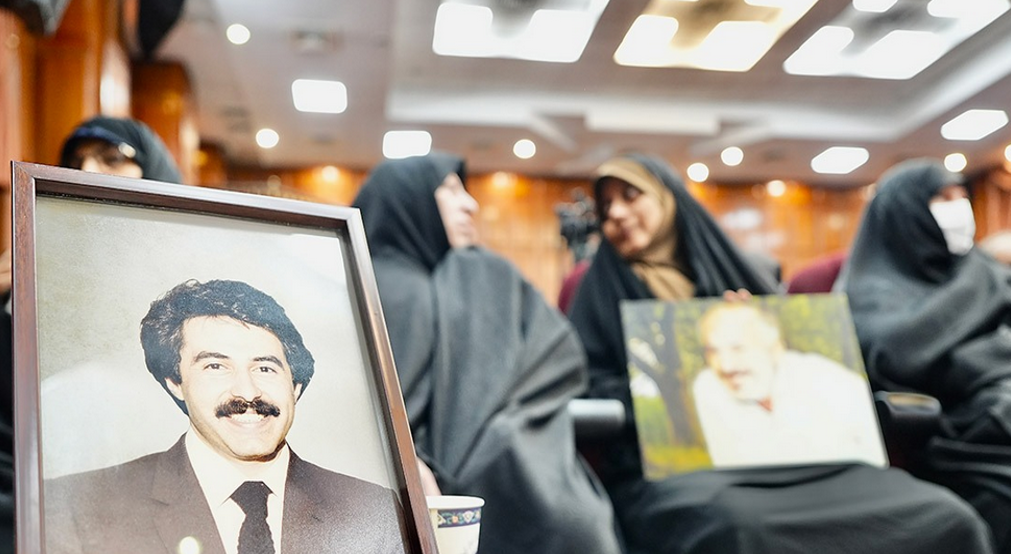
Tenth Court Session to Probe into Monafeqeen Terrorist Group & Active Members
The tenth judicial session concerning the case of the Monafeqeen terrorist group and its principal members convened on 6 February 2024. Present at this hearing were legal representatives, families of victims, investigating judges, and the prosecutor’s delegate.
The court’s president elaborated on the intricate details of the Monafeqeen terrorist activities, after which the prosecutor’s 30 representative proceeded to articulate excerpts from the indictment. Key highlights encompassing the prosecutor’s representative are as follows:
1. Monafeqeen Terrorists from Western, American Human Rights Perspectives
According to the laws of the U.S. State Department, when designating a group as a terrorist organization, specific reasons and examples must be provided. In the annual report on terrorism published by the United States, instances of the Monafeqeen Terrorist Organization’s activities, ranging from targeted assassinations to bombings, as well as intelligence and operational cooperation, are cited. However, following the US-led occupation of Iraq, there was a notable shift in the American stance towards the Monafeqeen Terrorist Organization. Despite previously being designated as a terrorist group, the organization was suddenly reclassified as civilians by the United States. This change in classification puzzled many observers, including the Rand Institute, which characterized the American action as a mystery.
2. Monafeqeen Terrorist Organization: Intellectual Origins
The Monafeqeen Terrorist Organization has been characterized by its armed nature since its inception, and its primary mode of operation has always been through armed actions. The terrorist group’s logo prominently features the image of a gun, underscoring its militant identity. Notably, the founders of this organization were never sanctioned by Imam Khomeini, and following the Iranian Revolution, they refused to surrender their weapons stockpiles to the new government. These weapons were obtained through two primary sources: some were purchased before the Revolution, while others were looted from military ammunition depots. Initially, the group justified its militarization under the guise of fighting imperialism, but 31 it later aligned itself with American interests, betraying its original revolutionary principles.

The Mojahed magazine, affiliated with the Monafeqeen Terrorist Organization, openly articulated the group’s intentions to establish a militia prepared for armed conflict against the Iranian people. In various issues, such as 142 and 146, the magazine boasted about the readiness of their militia for battle across the country. “The purpose of forming the militia was to create an armed group that is ready to confront and fight decisively with the people of Iran.”, wrote the said magazine in its 142nd issue. It also went on to say in its 146th issue: “Now the militia is ready to fight in the second battle in thousands of bases across the country!” Additionally, Jafar Hosni, a member of the organization, confessed to participating in street maneuvers aimed at maintaining readiness for subversive activities.
These revelations underscore the organization’s longstanding pursuit of armed conflict since the early days of the Islamic Revolution. 32 In the book “The Story of Guilt” by Bahram Azarafrouz, a defected member of the Monafeqeen Terrorist Organization, it is documented that Masoud Rajavi, the terrorist organization’s leader, insisted on escalating violence on June 20, 1981. The organization ordered attacks on that day in response to the destruction of its last stronghold, associated with Bani Sadr, the former prime minister who fled the country. The Mojahed magazine even detailed how groups of 100 individuals were deployed to practice armed struggle in the streets ten days before June 20, 1981.
The Monafeqeen Terrorist Organization, led by Masoud Rajavi, harbored aspirations of political dominance and was caught off guard by the defeat of the Bani Sadr faction following the failure of the political process. In response, the terrorist organization sought to break free from its political deadlock and seize power through armed confrontation with the Islamic Republic of Iran.
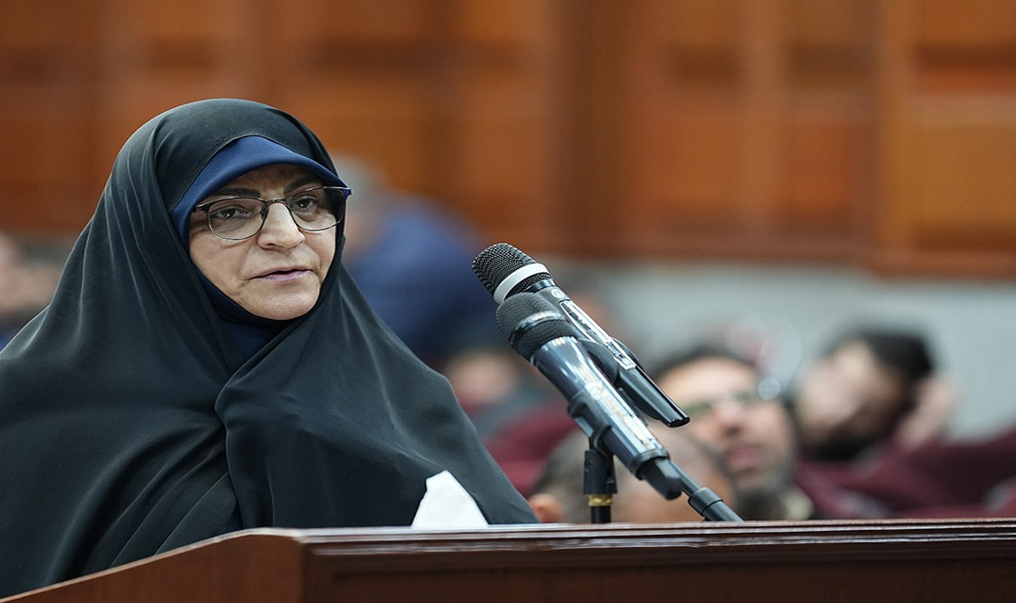
Militia: U.S. Private Army in Iran
During the court session, Zohreh Lajevardi, a history expert, testified that the Monafeqeen terrorists had been actively seeking to collect weapons and establish safe houses since the outset of the Islamic Revolution. She asserted that the militia formed by the Monafeqeen Terrorist Organization essentially served as America’s private army in Iran. According to her testimony, the organization had been systematically gathering weapons with prior planning, and this activity was indicative of their terrorist nature well before the events of June 20, 1981.
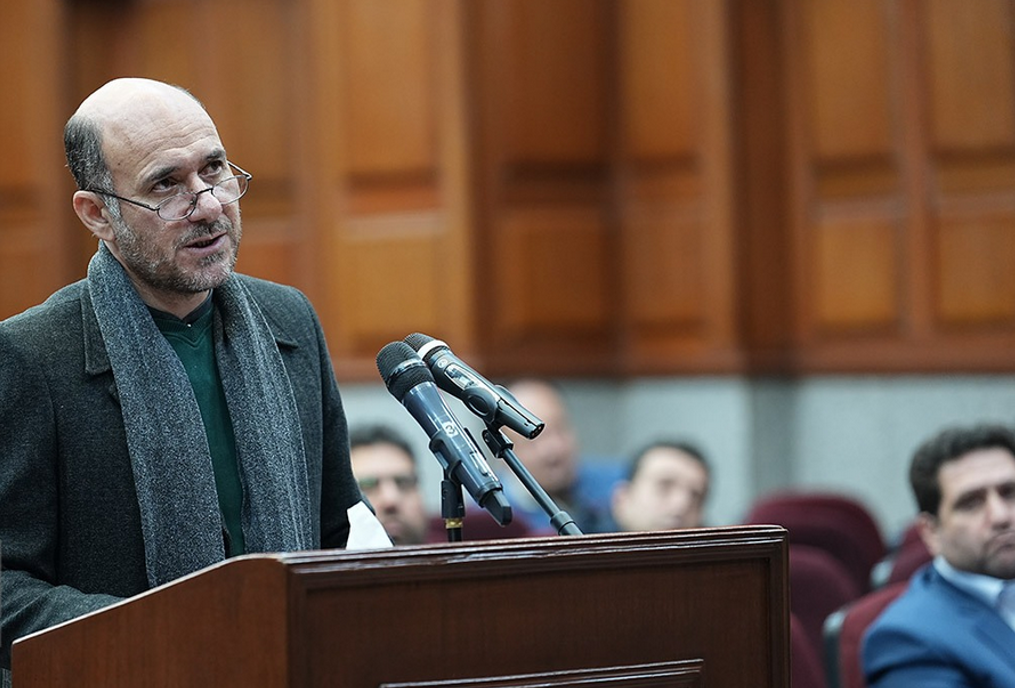
Testimony of Witnesses to Assassinations in Court Proceedings
Mehdi Chizari, one of the plaintiffs, recounted his harrowing experience during the court session. He stated that on March 13, 2000, he sustained severe injuries and lost his left leg in an attack carried out by the Monafeqeen terrorists at the Noor residential complex, where he was working as a supervising engineer on a municipal project. He described how the attack, which involved the throwing of a mortar, caused extensive damage to people’s homes and vehicles. Chizari emphasized the profound impact of the attack on his life, noting that he was a young father with a one-year-old child at the time. He urged the court to pursue justice for the victims and to ensure that their rights are upheld. Additionally, he requested compensation and qisas (retribution-in-kind) for the injuries he sustained, which included not only the loss of his leg but also approximately 75 shrapnel wounds that he continues to receive treatment for.
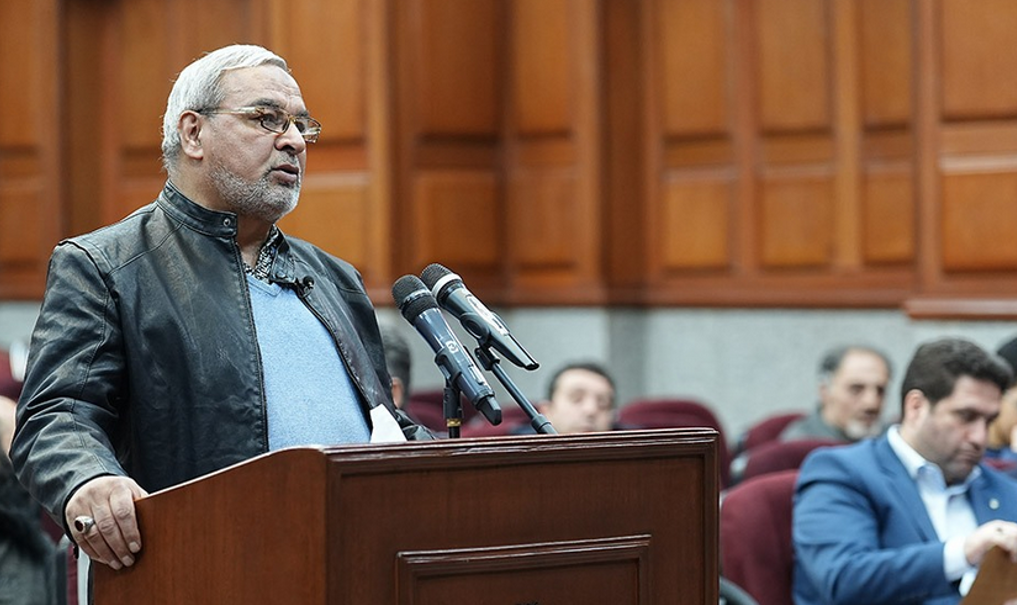
Urging Justice Against Perpetrators, Commanders of Assassination
Mohammad Taghi Samarghandi, the son of martyr Gholamreza Samarghandi, recounted the tragic loss of his father during the court proceedings. He explained that his father, who was on his way to serve in the war effort, was martyred by a terrorist team associated with the Monafeqeen organization. Despite the dangers posed by these terrorists, his father courageously converted one of their safe houses into a clinic after it was conquered in 1981. This act of compassion and service to the community incurred the wrath of the heartless Monafeqeen terrorists. On the morning of April 28, 1982, as his father was en route to Imam Khomeini Hospital during the Iran-Iraq War, he was mercilessly gunned down by Monafeqeen terrorists. Mohammad Taghi Samarghandi lamented that his family was left without a father, with 37 his mother shouldering the responsibility of caring for 13 orphaned children. He urged the court to deliver justice by holding accountable both the commanders and the perpetrators of this heinous assassination.
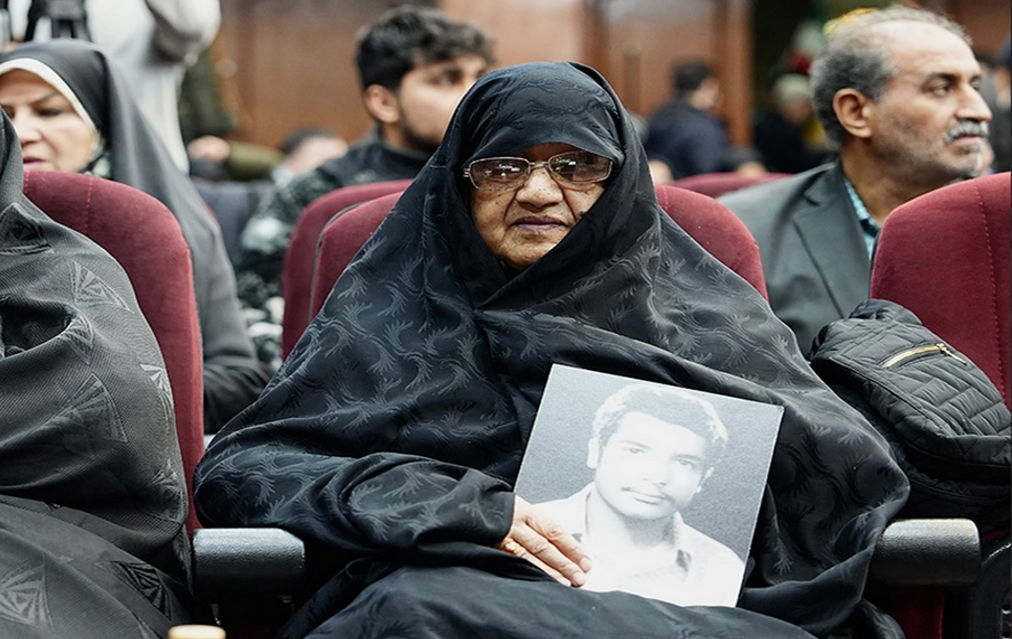
U.S. Main Sponsor of Terrorism
Kobra Ghanbari, the grieving mother of Martyr Davoud Arjamandi, shared her heartbreaking testimony during the court session:
“My son, like many young Iranians during the war, made the brave decision to serve on the front lines voluntarily. He applied for training through Basij. While he was in a car with his colleagues, engaged in his training course, they were ruthlessly chased by these terrorists. This pursuit escalated into a violent conflict, resulting in the tragic martyrdom of two out of the three passengers in the car, including my son. Why should these terrorists be allowed to roam freely? Just as America has supported the Monafeqeen terrorists, it 38 also backs the crimes of the Zionist regime in Gaza. America, in my eyes, is not a super-power but a super-oppressor. I will spare no effort in ensuring that the Monafeqeen terrorists face justice. I hope that they will be uprooted from Earth, [never to spread terror again.]”
At the conclusion of the present session, the presiding judge declared that the subsequent session of the court, in consideration of the forthcoming parliamentary elections and the Iranian New Year, shall convene on 16 April, 2024, at which time statements from relevant parties shall be entertained.
To read the detailed report click here